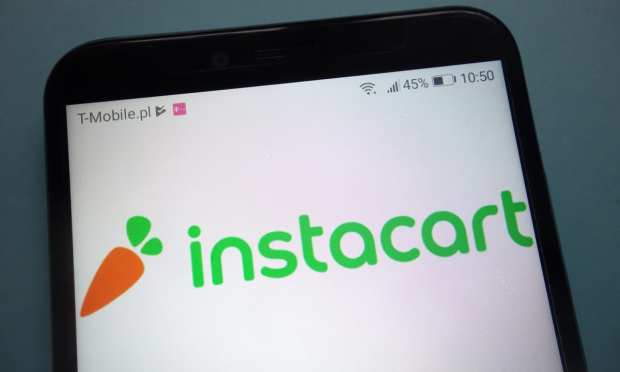Food Delivery Services Aim To Expand To ‘Everyday Goods’

On Wednesday (March 31), arts and crafts retailer Michaels announced a partnership with Instacart to pilot test same-day craft supply delivery. For Instacart, this announcement marks a major departure from grocery delivery, the bread and butter, pardon the pun, of its business. The program suggests that Instacart’s vision for its future could extend well beyond the food and beverage space, with the company becoming a same-day delivery marketplace across retail categories.
“As people continue to rely on Instacart for same-day delivery of everyday goods, we are proud to introduce Michaels, the leading arts and crafts retailer in North America, to the marketplace,” reads the company blog post announcing the partnership. “… Following the initial pilot, Michaels delivery via Instacart is expected to expand to all Michaels stores in the U.S. over the coming months.”
That first clause does a lot of work there — most consumers would be more likely to say that they use Instacart for grocery delivery than for “delivery of everyday goods.” By characterizing its offerings with the vague term “everyday goods,” the delivery service opens the door to a wide range of possible future partnerships extending well beyond the grocery space.
The language of the post mimics a similar move the company made in February, in a blog post announcing its partnership with Walgreens. At the time, Instacart wrote, “We’re dedicated to giving customers seamless, safe and reliable same-day access to the essentials they need from the retailers they know, love and trust. This commitment has made Instacart part of the household rhythm for people across North America, and we continue to welcome beloved retailers to the marketplace to ensure customers can get the goods they need.”
This transition from groceries to “essentials” to “everyday goods” is similar to moves being made by other businesses that originated with food delivery, though the partnership with Michael’s is one of the most dramatic departures yet. Like Instacart’s partnership with Walgreen’s, Uber Eats announced a partnership with prescription delivery service Nimble in January.
“At Uber, we’re hard at work making Uber Eats your go-to destination for much more than food from your favorite restaurant, corner store, or grocer,” Kiran Vinta, Uber’s director and general manager of new verticals in the U.S. and Canada, said in a statement at the time. More on the nose than Instacart’s language, Uber Eats directly asserts that the service aims to move well beyond the titular “eats” category.
For its part, DoorDash has been growing its offerings not just beyond the food industry but also beyond the third-party model with DashMart, its in-house convenience store whose “household essentials” category sells everything from candles to trash bags to pens.
Announcing the launch, Andrew Ladd, the company’s director of new verticals, wrote, “Our mission is to connect customers to the best in their cities while helping any business on Main Street grow, and we hope to inspire even more local businesses — from restaurants and bakeries to artisanal shops and home goods retailers — to sell with us on DashMart … This latest launch continues our commitment to the growth and success of local businesses.”
These moves to broaden the model beyond just restaurant and grocery delivery make sense, given the notoriously unforgiving margins of food delivery. Of course, same-day delivery with human drivers in small (non-truck) vehicles will be costly, no matter what the driver delivers. It remains to be seen whether all these services, which began with food delivery, will grow until we barely remember that they began as restaurant/grocery delivery services, or whether food will remain at the core of their offerings.